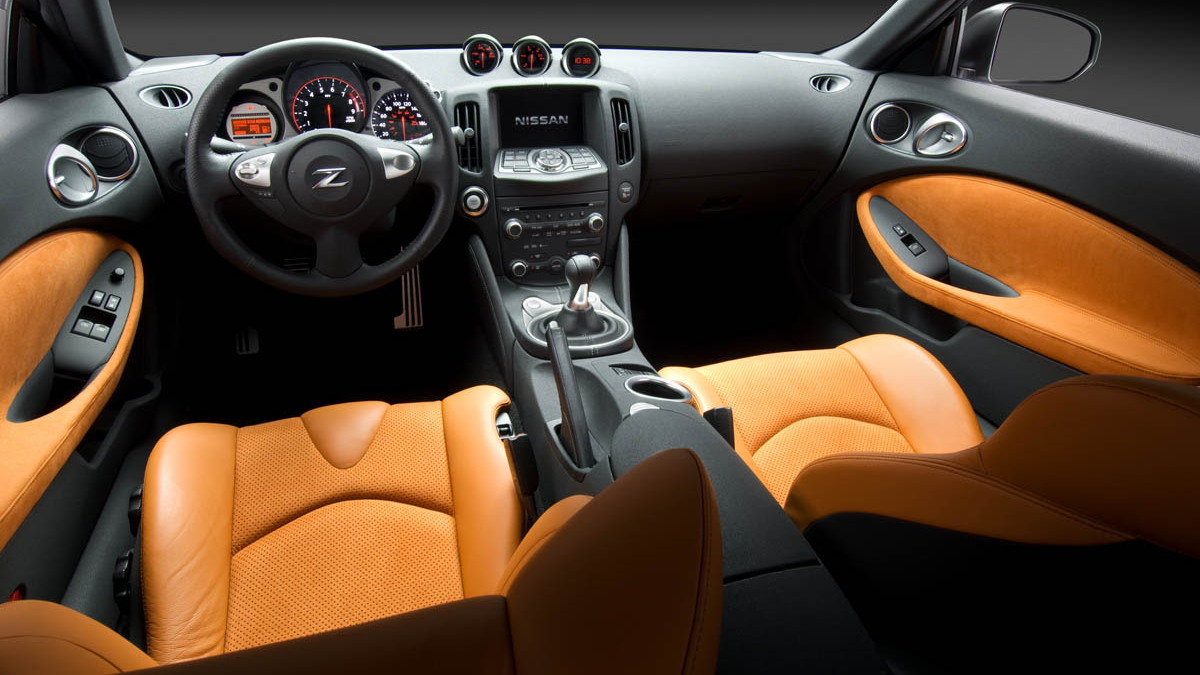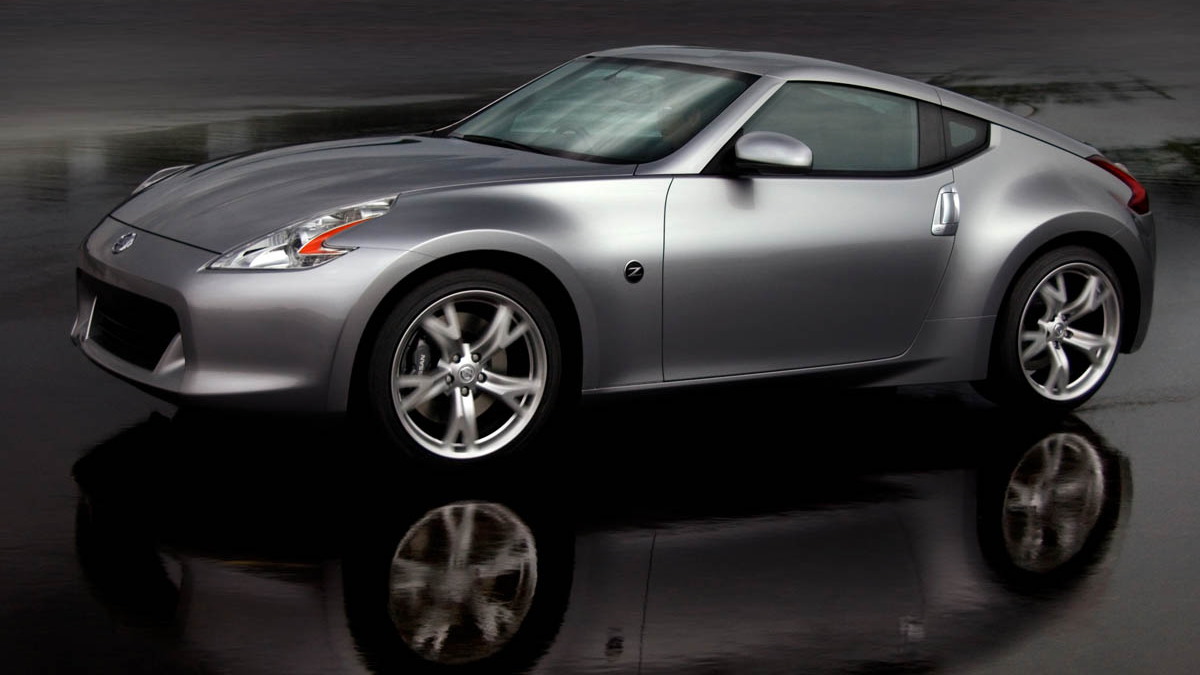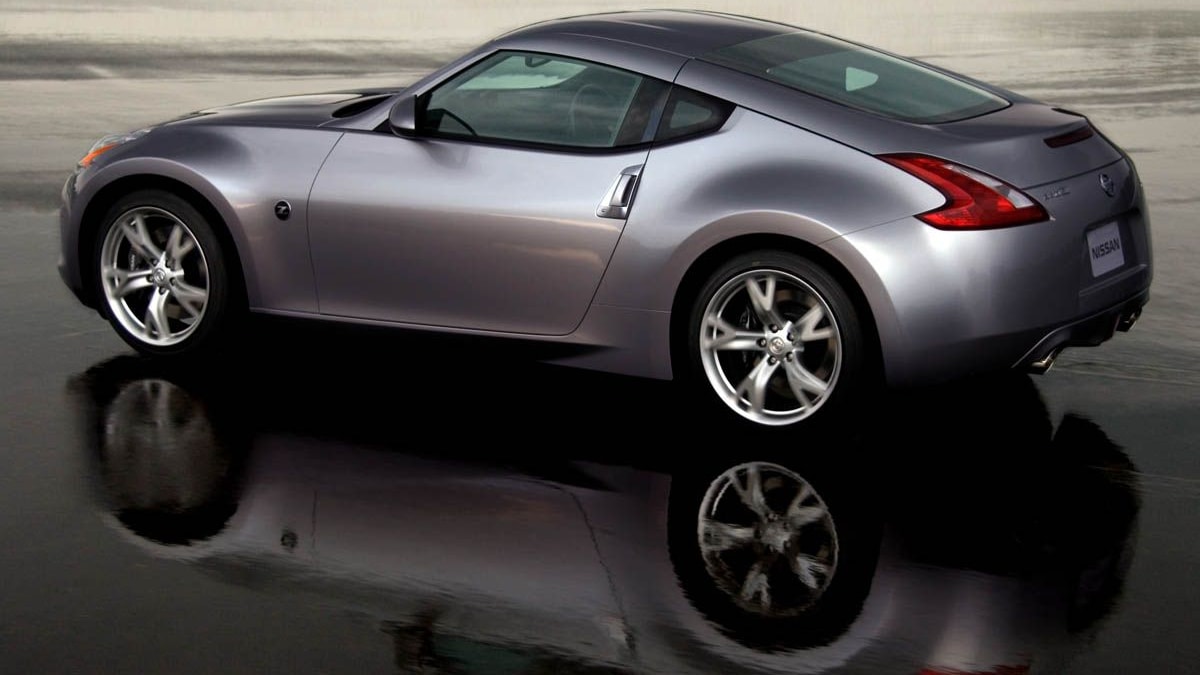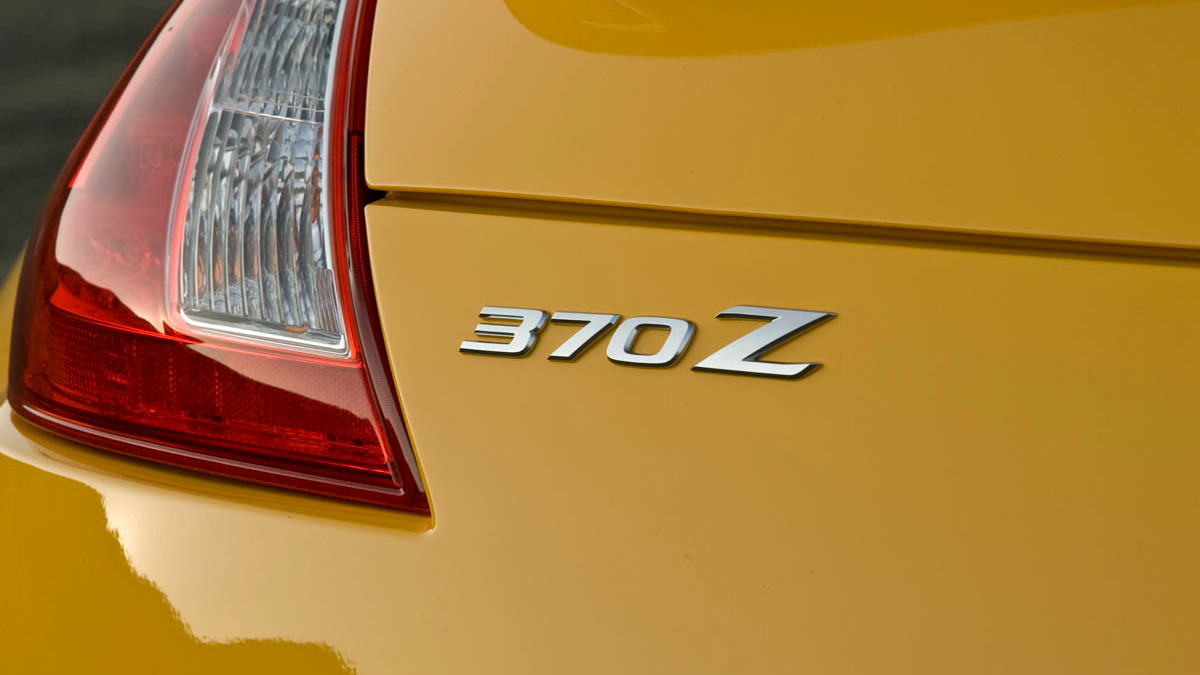In the first full redesign of the iconic Nissan Z since its re-introduction as a 2003 model, nearly every piece and component has been redesigned. This includes a shorter wheelbase, greater use of lightweight body materials, a new engine with more horsepower and improved fuel economy, a new seven-speed automatic transmission with paddle shifters, a world's first synchronized downshift rev-matching system for the manual transmission, and a greatly improved cabin.
In keeping with the ‘affordable performance’ theme of its 350Z predecessor, Nissan has priced the 370Z from $29,930 in the U.S. and is once again offering the model in both base and Touring trim. The new price represents a $1,420 increase over the 2008 350Z.
Some details we do know include the introduction of Nissan’s award-winning 3.7L VQ37VHR V6 engine in the latest Z. This is the same engine as found in the Infiniti G37 Coupe, and in the new Z-car application, it will make 332hp (247kW). Torque is rated at 270lb-ft (366Nm).
The innovative rev-matching downshift feature on the six-speed manual transmission is sure to draw both praise and complaints, as enthusiasts lose one more aspect of control over the car.
The "SynchroRev Match" function automatically controls and adjusts engine speed when shifting to the exact speed of the next gear position, essentially "blipping" the throttle to smooth out any up/down shifts. This helps to improve vehicle balance and smoothness by reducing the typical harshness when the clutch is engaged.
The system can be deactivated with a button next to the shifter for drivers who prefer less vehicle intervention and is offered as an optional extra.
The new 7-speed automatic, meanwhile, gets its own Downshift Rev Matching (DRM) and Adaptive Shift Control (ASC) features, which offer manual-like shifting response when operated in manual mode. Shift times get as low as half a second. Drivers can use the standard paddle shifters or the shift lever.
Estimated fuel economy is 18mpg in the city and 26mpg on the highway for the six-speed manual model – about 1mpg higher than the outgoing 350Z. The automatic is expected to feature similar fuel-economy.
The new Z's wheelbase is nearly four inches shorter than the previous generation (100.4 inches versus 104.3 inches), accomplished by moving the rear wheels forward in the second-generation FM platform, while overall length is reduced by 2.7 inches (167.1 inches versus 169.8 inches). At the same time, the overall width been increased by 1.3 inches, the rear track by 2.2 inches and overall height reduced by 0.3 inches, giving the 370Z a much more aggressive stance.
The more compact exterior dimensions and expanded use of lightweight materials help reduce weight. For the first time, the Z features aluminum door panels, along with an all-aluminum hood and an aluminum hatch.
At the same time, the body structure was extensively revised, improving front body torsion rigidity by 30%. A new front suspension cradle to reduce front body lateral bending, new rear structural reinforcements, and an underbody "V-bar" all help reduce rear lateral bending. Other enhancements include the use of a carbon fiber composite radiator housing and strengthening of the rear fender and hatch areas.
Rear body torsion rigidity is improved by up to 22% and rear body vertical bending rigidity is improved by up to 30%.
The coefficient of drag is 0.30 (0.29 with the Sport Package), the same as the previous generation 350Z Coupe. The new Z also maintains the previous model’s zero front lift and zero rear lift when equipped with the rear spoiler.
The car also comes with 18in wheels fitted as standard. Also available as part of an optional Sport Package are 19in Rays forged lightweight aluminum-alloy wheels with Bridgestone Potenza tires.
Braking hardware consists of standard vented discs with Electronic Brake force Distribution (EBD). The optional Sport Package includes large diameter 14.0-inch front and 13.8inch rear rotors (versus 12.6-inch front/12.1-inch rear standard rotors) with four-piston front and two-piston rear aluminum calipers.
Inside, the traditional three-pod cluster with oil temperature, voltmeter and clock remains, while the speedometer and tachometer now include an "initial sweep" function, coming alive when the car is first started.
Both the driver and passenger's seats are structured with an anti-slip material in the main seating surface. The seats are available with optional leather trim, heater functionally, and electronic four-way adjustable movement. Adjustable active head restraints are standard.
Standard interior comfort and convenience features include Nissan’s Intelligent Key with a power starter button, two 12volt power outlets, four cupholders, high intensity discharge (HID) bi-functional xenon headlights, and a four-speaker stereo.
The Touring model adds synthetic suede and leather-appointed sport seats with adjustable lumbar support, a Bose audio system with eight speakers, XM Satellite Radio and Bluetooth connectivity.
An optional Navigation Package includes the touch-screen Nissan Hard Drive Navigation System with XM NavTraffic with Real-Time Traffic and a 9.3GB Music Box Hard Drive and Interface System for the Apple iPod.
The new 2009 Nissan 370Z Coupe model is scheduled to go on sale in North America in January next year, followed by a new 370Z Roadster for the 2010 model year. Also in the works is a higher-performance Nismo enhanced version, which you can read about by clicking here.
Nissan thinks the new Z will have what it takes to contend with the Porsche Cayman, and it's already said it will be targeting the German sports carmaker with its latest coupe. Previous prototypes of the car have been seen testing alongside BMW's Z4m Coupe and the Porsche Cayman S, suggesting that Nissan may have another segment-leader on its hands.






